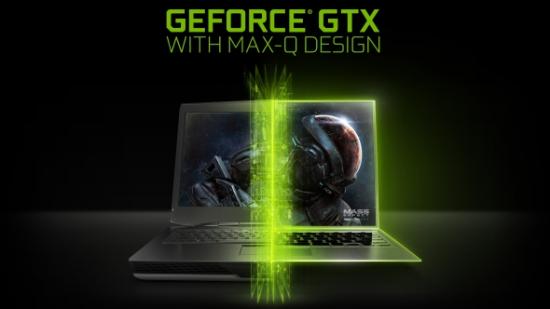Super-slim Nvidia GTX 1050Ti Max-Q machines versus AMD Vega-powered Ryzen Mobile gaming ultrabooks. That’s my current hardware nerd fever-dream.
You know what’s letting down all gaming laptops? Trackpads. So you’ll need something from our pick of the best gaming mice.
A week at Computex can feel like a lifetime. There are the long hours of press conferences, workshops, briefings, events and just pounding the show floor itself. And then you’re inevitably burning the midnight oil back at your apartment because that’s the only time you get to actually do any writing outside of the odd snatched half hour here and there, piggy-backing whatever unsecured wifi network you can hook into.
But that’s just the fun stuff.
If you’re also staring right down the barrel of impending middle-age, while lugging a laptop around with you for ten hours a day, there’s a good chance you’ll be waking up on the last day of the show to the anguished screams of your spine.
Or maybe that’s just me. Whatever, there was a definite pained sound coming from a space just below my nose this morning and it was all to do with my choice of notebook show companion.
For all the thin ‘n’ light noises coming from Nvidia, regarding their new GTX Max-Q design, even an 18mm thick, 15-inch laptop will weigh you down over time. Y’see, I’ve actually been kinda using a Max-Q laptop for my entire time at this year’s Computex – I’ve been road testing a beautiful Chillblast machine for a while which uses the exact same MSI GS63 chassis featured in all of Nvidia’s Max-Q presentations this week. And that’s one of the lightest of the current designs.
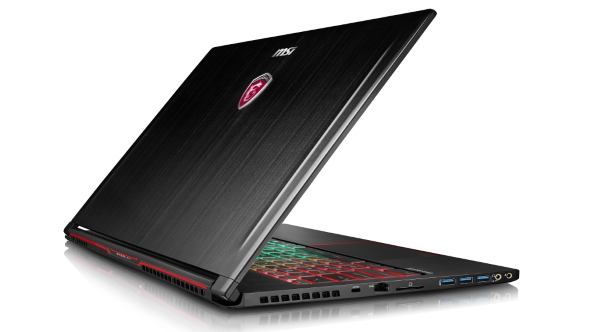
I’m using the original GTX 1060 version, and so it doesn’t have the impressive power regulation tech baked into the new Max-Q MXM GPU modules; the same technology which has allowed Nvidia and MSl to drop a full GTX 1080 into an identical chassis and still maintain a peak 40dB when gaming at full chat. But it’s joined me on this trip because it allows me to indulge my gaming obsession even while on the road and is a joy to work on too thanks to its lovely screen and healthy battery life.
But whether 1060 or 1080, it’s still not got that elusive mix of gaming power and form factor which won’t leave this aging sack of flesh and creaking bones cursing his raging spine of a sweltering Taipei morning.
Don’t get me wrong, l‘m genuinely impressed with the intelligent way Nvidia have created their Max-Q design concept. The power/acoustic/thermal/gaming performance tightrope walk they’re embarking on requires some serious balance to avoid falling to their doom. And on the face of it they’ve got it pretty well nailed.
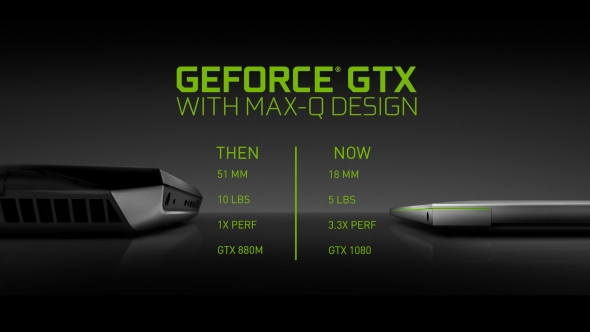
But there’s still space for something rather special to follow this initial Max-Q announcement, and I’m positive Nvidia must already have it in the pipe. There’s a glaring GTX 1050Ti-shaped hole in the new lineup, with only the GTX 1060, 1070 and 1080 getting the Max-Q treatment so far.
Speaking about the GTX 1060 in particular, Gaurav Agarwal, product manager for Nvidia’s gaming laptops, told us yesterday that “in principle you can design a thinner laptop than a Razer Blade, because you don’t need to supply 80W anymore.”
That card currently demands a full 80W in total graphics power, but with the upcoming Max-Q version that drops, by a pretty astounding 25%, to just 60W. Now if you can make a laptop thinner than the already pretty damn svelte Razer Blade using a 1060, imagine what sort of form factor you could drop a GTX 1050Ti into and still get decent 1080p gaming performance.
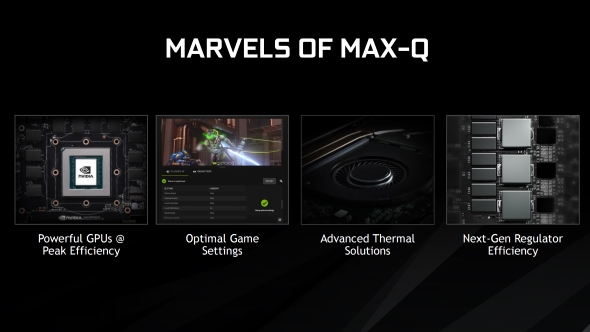
“Well, we haven’t done that yet, let me put it that way,” said Agarwal with a grin. “It sounds like a good idea…”
Theoretically, could Max-Q mean you’d be able to create incredibly thin gaming laptops if you applied the same regulatory hardware to the GTX 1050Ti?
“Theoretically,” he smiled.
l mean that’s obviously no confirmation, but I don’t think it’s too much of a stretch to think we could be looking at a potential gaming ultrabook of almost MacBook Air proportions should they so desire.
Now, why would Nvidia want to keep such a thing held back when the big-boy Pascals are getting the full treatment? Well, there’s currently zero competition in the gaming laptop market when it comes to graphics cards. Sure, AMD have announced that Ryzen Mobile will be getting the Asus ROG magic, but right now you could probably count the number of Radeon-powered gaming laptops available on a leper’s toes.
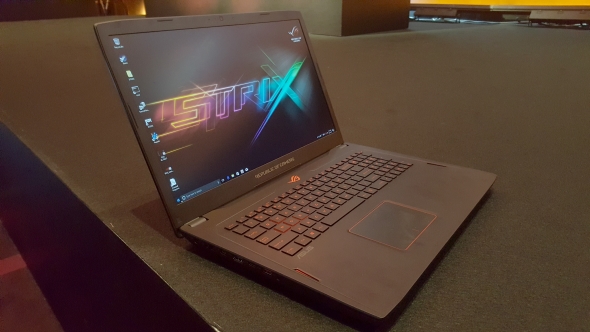
That really ought to change when Ryzen Mobile fully launches. Pairing it with a mobile RX 580 will give AMD some pretty high-end gaming laptops, but if we’re talking gaming ultrabooks then it’s the Vega graphics core at the heart of the matter which could give Nvidia something to think about. If, running on that integrated Vega GPU alone, a slimline Ryzen Mobile laptop is capable of decent 1080p gaming Nvidia will need an instant answer.
And a MacBook Air doppelganger running a GTX 1050Ti Max-Q GPU would be it.
Either way, I want one of them to make me a genuine gaming ultrabook in time for next year’s show. C’mon guys, the clock’s already ticking.
